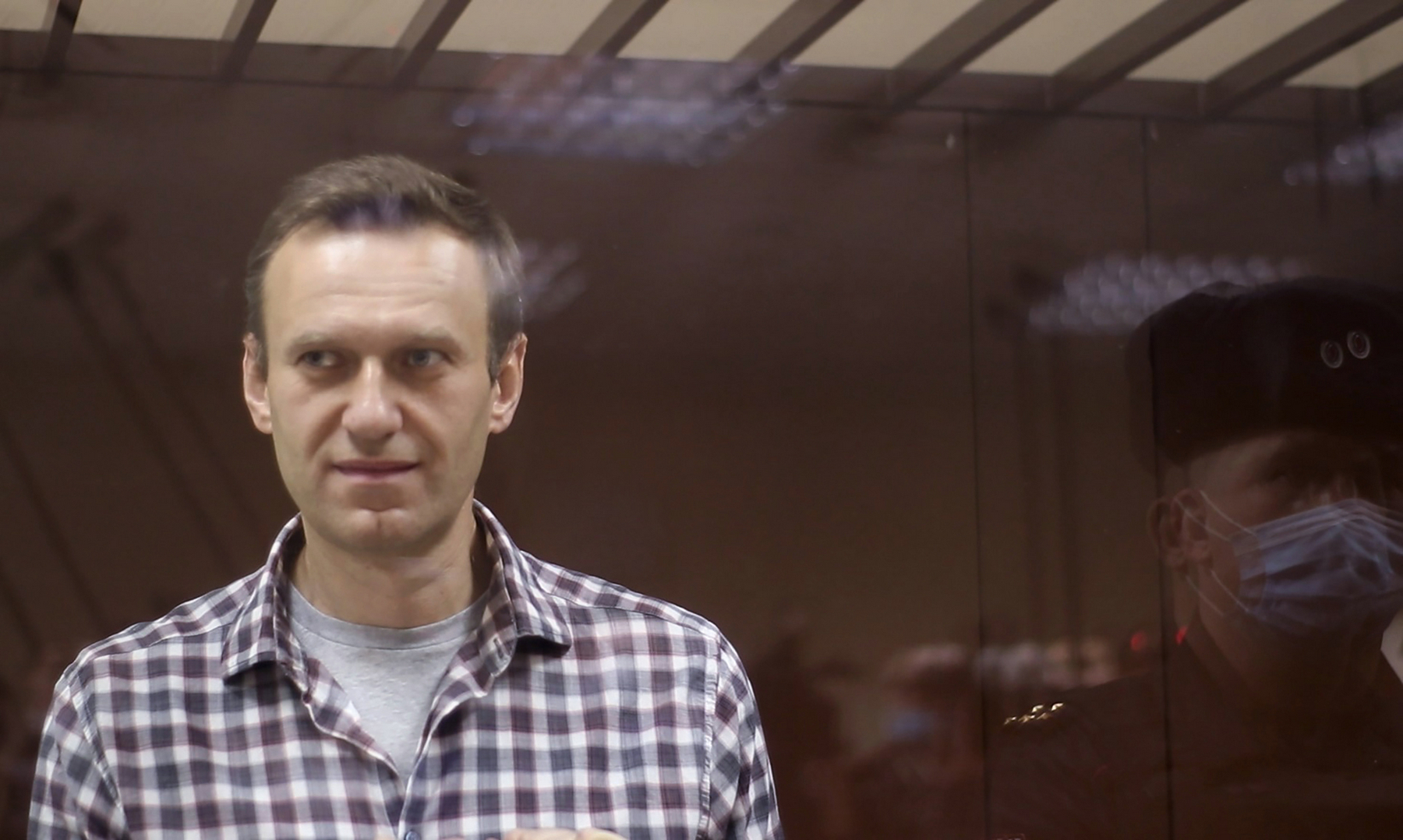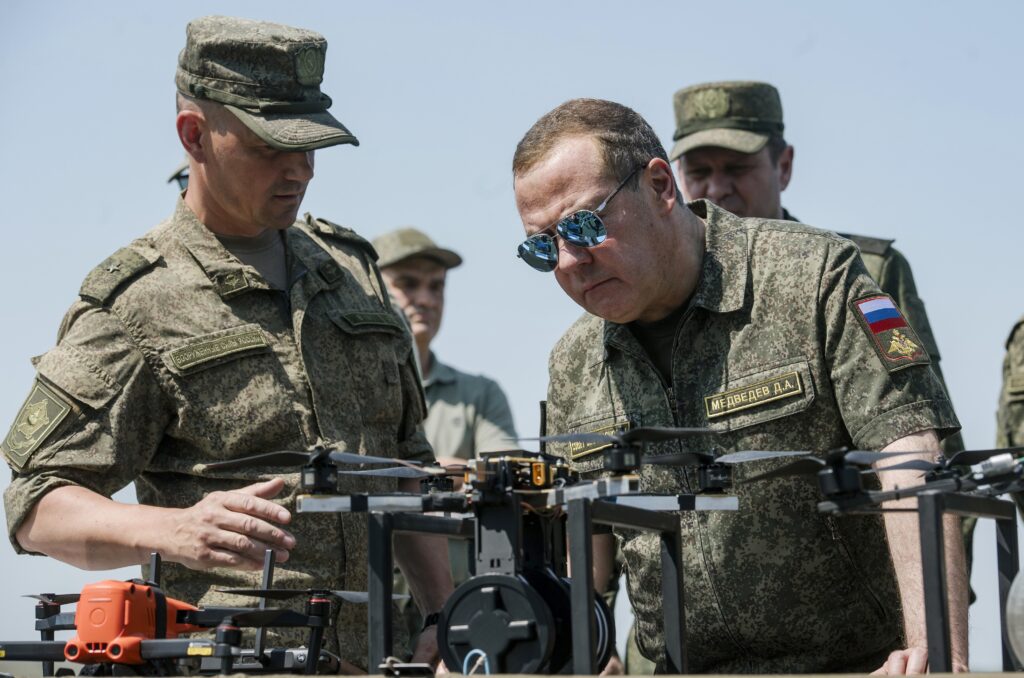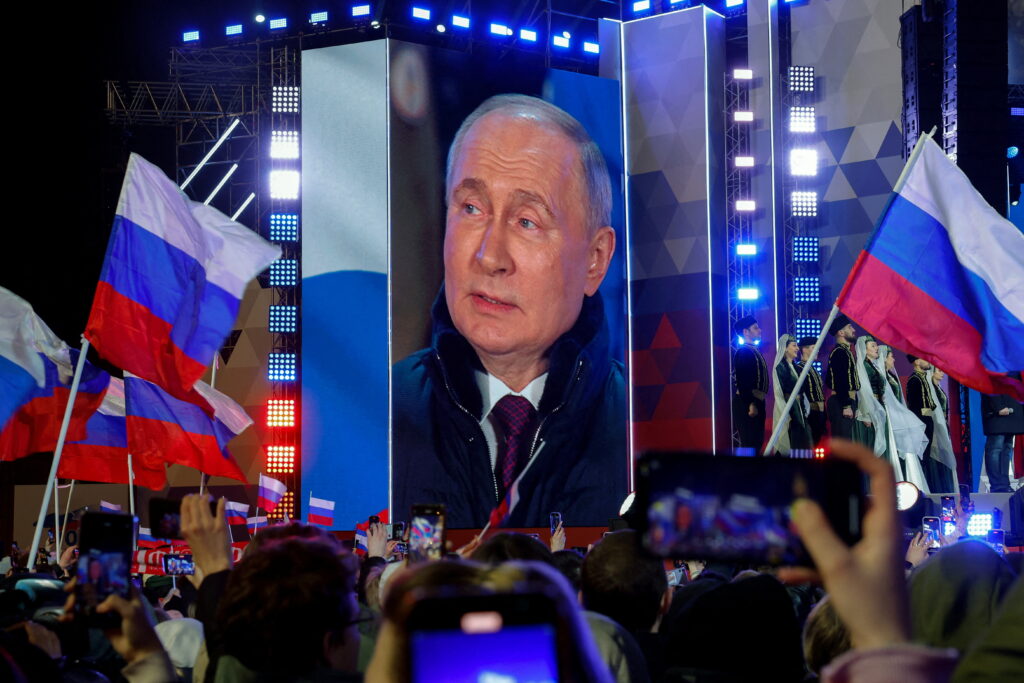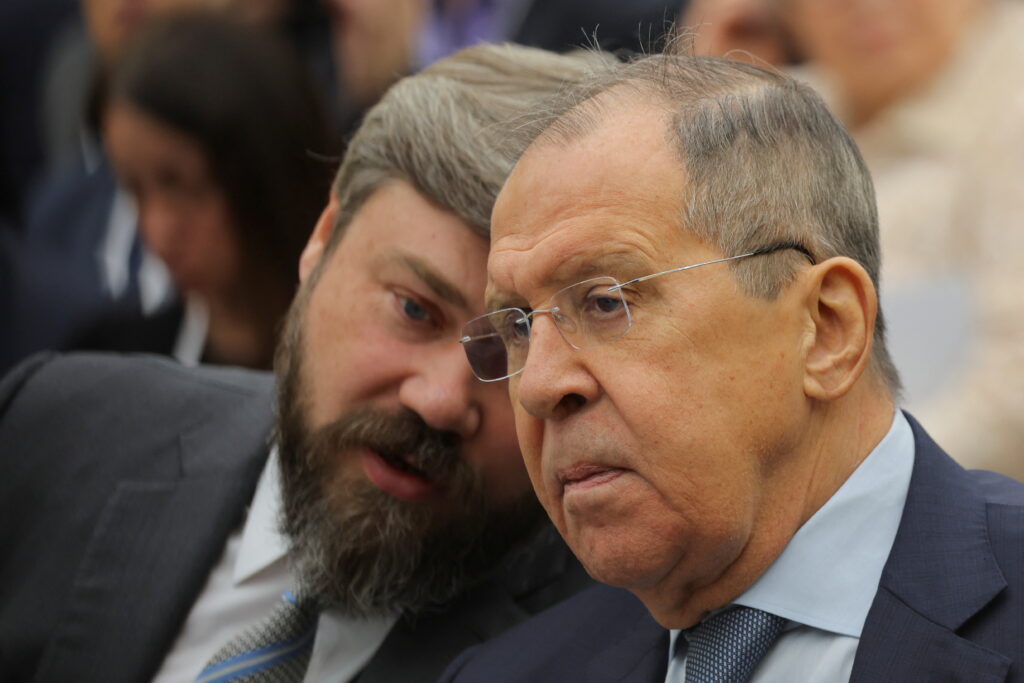January marked an escalation between the state and its opposition in Russia. On January 17, Russian opposition leader Alexei Navalny returned to Moscow from Berlin. He was duly arrested. Two days later, his team published the documentary film, «Putin’s Palace,» which gathered more than 113 million views. The film investigated the construction of a mansion on the Black Sea. The most substantial unsanctioned protests of the past few years followed on January 23 and 31. To assess the magnitude and import of these protests, observers have to rely on indirect criteria: the number of protesters detained, and the scale of the media’s response. By these two criteria, the demonstrations can be called the most significant in recent years.
Such large-sale events were made possible by the rise of Navalny’s personal importance. In the last five years, the number of respondents unaware of his work (or chose ‘it’s difficult to say’) has decreased by half, from 50 percent to 25 percent. Among the increase of those aware of Navalny are those who approve of him (which has risen from 6 percent to 19 percent of respondents), as well as those who disapprove of him (an increase from 41 percent to 56 percent). Navalny’s political career is a unique example of the formation of a political actor who is against everything. He doesn’t belong to any of the establishment’s curated opposition groups; he doesn’t engage in the issues traditional of the opposition. Instead, his fame came from a role outside the usual political norms — not a parliament deputy, bureaucrat, or manager —but as a video blogger. He is the only political actor who has been able to become аn opponent on a federal level.
The pause in protest activities declared by Navalny’s team allows us this opportunity to sum up the latest in the confrontation between Navalny amd the Russian State.
Awareness of the film and the protests
Anti-corruption investigation has become Navalny’s primary instrument for expanding his recognition. The January protests were timed to immediately follow the release of the «Putin’s Palace» film. According to the Levada Center’s research, 26 percent of Russian citizens viewed the video-investigation. 37 percent of respondents were familiar with its contents. In 2017, only 18 percent of respondents had heard of «Don’t Call Him Dimon,» the documentary film released that year about the corrupt affairs of Dmitry Medvedev.
The disproportion of viewers by age group increased appreciably. Youth were much more active in viewing «Putin’s Palace» than they were four years ago when «Don’t Call Him Dimon» was released. In 2017, there was no noticeable disparity between age groups in how well-informed people were. Age groups, however, are tied to more than just levels of awareness. They reflect how people relate to the conclusions Navalny’s investigation make. 81 percent of Russian citizens up to 25 years old see the investigations as having content that ‘seems true.’ Only 39 percent older than 55 would agree.
The events this winter once again enforce the widening generational gap. This gap results in part from ‘objective’ causes. The style and content the core elite employs in communication with society is alien to younger generations. The constant and ubiquitous geopolitical rhetoric and discussions of the need for isolation resound in all varieties of contexts such as withdrawal from international organizations to disconnecting from global internet. This garners absolutely no support from those who no longer feel the weight of state shackles. The situation is reinforced by the added effect of having a choice between television and internet media. A Russian citizen’s attitudes to events are in large part determined by their preferences of source for receiving information. The increase in awareness of the films produced by Navalny’s anti-corruption organization can be explained by more than just the team’s increased activity. It is due to more widespread changes in the very nature of how media is accessed in Russia.
A similar dynamic can be found in how respondents view those who take part in protests. In 2017, age had practically no influence on whether respondents saw protestors with approval or not. The situation now has changed. Perceptions of the current protests differ according to age group. Young people see the protesters much more positively (38 percent) than representatives of the older generation (16 percent).

Discussions about the youth acting as the driving force behind the protests first appeared during the demonstrations Navalny organized in 2017. The age differences have since grown and are now even more evident. Differences among people grouped by income level, on the other hand, are less frequently considered as a factor that differentiates those who support the opposition.
In 2017, higher-income groups had appreciably greater awareness of Navalny’s activities. The latest research shows a sharp decline in awareness differences between groups of different levels of income. This is mostly due to the growth of the politician’s recognition among low-income groups (among those who are unable to afford expensive electronics, automobiles, real estate). This trend flows from Navalny’s own political activities, as well as from growing dissatisfaction with the State’s economic policies and the pandemic which has hit hardest at the most vulnerable segments of the population.
One way or another, the principal opposition leader in the country has expanded his audience’s ‘class’ boundaries. Talk of this being just a matter of well-to-do Muscovite dissatisfаction to deal with is now practically unheard. The events of the past two years show that the protest agenda has coalesced through the regions and the societal base of dissatisfaction is growing. This is likewise expressed in the readiness of those who came of age between 2017−2020 to go out into the streets in protest with the lowest-income groups in Russian society.
The beginning of the year showed a certain deflation in protest moods among society (even with the January events). This may be explained as an effect of the New Year holiday season and people’s general retreat during the quarantinе regime. Long-term trends, however, indicate that in the past three years indignation in society has been growing.

Monitoring of monetary savings shows that only a third of Russians in low-income brackets have any kind of savings. The rise in protest sentiment among low-income populations, like that among youth, can be explained by objective factors. In this case, the pension reforms, rising prices and taxes are behind the rise in protest sentiment. Any opposition activity, of course, attracts population segments less satisfied with life. It’s important to keep in mind, however, that readiness to participate in protest demonstrations remains limited to only talk, as long as opinion leaders fail to choose an appropriate trigger to put them into action.

The Fly Trap
We have seen over recent years considerable growth in recognition of Alexei Navalny and in knowledge of his work. Yet perceptions of his politics have not fundamentally improved. Both positive and negative character evaluations have risen about equally. «Putin’s Palace» was received with more overwhelming skepticism than the investigation of Dmitry Medvedev’s corrupt dealings. Perceptions of the January protesters are decidedly worse than perceptions of the protesters who demonstrated six months ago in Khabarovsk. The number of those willing to include Navalny in a list of trustworthy politicians remains relatively low (4 percent). Yet even that modest number puts Navalny above the leader of the Communist Party Gennady Zyuganov and practically on par with the popular state actors Sergey Lavrov and Sergei Shoigu.
The vigor of recent protests can be attributed to the noticeable decline in living standards, a shift in sources of media consumption and the growing generation gap, in addition to the efforts of Navalny’s team. The politician can no longer count on growing his audience among those who haven’t heard of him. Navalny has a nearly 90 percent recognition rating in Russia (including those respondents who know of him but express no appraisal of him). As a politician, it follows, he must fight for the minds of Russian voters who already have formed an opinion of him. The existing opinion of him is mainly negative.
Reasons for negative perceptions can be drawn implicitly from analysis of sentiments about the protests and anti-corruption investigations. A common theme ascribed to the protesters is that they are paid by protest organizers. Who could be paying for mass disturbances and riots, according to opinions in Russia? It must be either the oligarchs disaffected with the powers that be (there are already several such oligarchs), or foreign powers, namely the governments of western countries. Many people don’t believe that things would be better if Navalny’s team came to power. The appetites of the current elites, so the theory goes, are already satiated; new elites would plunder even more energetically.
Navalny will have to take another look at the resources available to him and at the landscape of public sentiment in the country. In the Levada Center’s January survey, 40 percent of Russian citizens expressed a view that the country is on the wrong track. This population segment serves as a breeding ground for all opposition actors, including those outside the established system. Of those dissatisfied with the current state of affairs, one third of respondents (34 percent) approve of Alexei Navalny (19 percent on average). Meanwhile, 39 percent of the dissatisfied segment disapprove of Navalny’s activities. Understanding of how these two groups compare and contrast is critical.
Sentiments recently on the rise among the dissatisfied include, а feeling that the people of Russia have been wronged, as well as feelings of embarrassment for what has happened, fatigue, dismay and despair. Navalny supporters feel the first two sentiments most acutely. These two sentiments uphold Navalny’s moral high ground, which differentiates him from the corrupt state. This predominant sentiment of being wronged is felt by more than 40 percent of those sympathetic to Navalny. This sense of offense can be mobilized by transforming it into an impulse for active expression of dissatisfaction. Among those who are dissatisfied with the country’s politics and also with Navalny’s political efforts, the sentiment of offense taken for the masses is among those common, yet not dominant over other sentiments. All other widespread feelings can be considered depressive, demobilizing and therefore counterproductive from the view of the opposition movement. The feeling of accomplishment, which will dissipate over the extended pause declared by the opposition, is vital to maintain emotional tension.
Beyond the emotional state of opposition supporters, the protest agenda is also imperative. Regular polling shows the predominance of protests against economic problems such as rising prices, the impoverishment of the population and unemployment. The problem of corruption is also at the top of the list but commands distinctly less importance than social welfare problems. Navalny focuses on the most scandalous element — corruption in the upper echelons. The Russian population has no illusions about its government. Navalny only proves what many had suspected long ago (or wanted not to think). In raising the issue pointblank, Navalny has positioned himself as the personal rival of the president.
The situation today follows a distinct formula. Navalny supporters are people tired of Putin. Navalny’s opponents are people afraid of the drastic changes inherent in a regime change. Between these two groups is a relatively sizeable segment (roughly 20 percent) of Russia’s population, which has built up dissatisfaction but doesn’t have an outlet to express it. These people as a rule are less critical of the state of affairs and are drawn to middle-of-the-road sentiments. Among respondents already dissatisfied with the conditions in the country but not prepared to support the opposition, it is more common to come across the opinion that there are no politicians who represent their point of view. These respondents measurably more frequently approve of the activities of the president and other state actors.
The challenges described here are common to all opposition in Russia. The prospective opposition supporter is waiting for moderate decision-making, free from radical statements and antagonism. In claiming his role as the personal rival of the president, Alexei Navalny has left behind part of the ‘doubting’ public in Russia who are not ready to make such a consequential choice until they have proposed solutions to the array of problems that stand in the country’s way.









